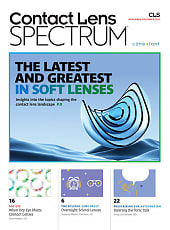
Members of The Myopia Collective, a partnership between the American Optometric Association (AOA) and CooperVision, met with lawmakers in Washington, D.C., Nov. 17-18 to advocate for the Early Detection of Vision Impairments (EDVI) for Children Act of 2025 (H.R. 2527). The bipartisan legislation would establish the first federally funded program dedicated to children’s vision and eye health.
If enacted, the bill would support state and community programs aimed at identifying and addressing vision problems early in childhood. Advocates note that rates of myopia, or nearsightedness, continue to increase as screen-based learning becomes more prevalent.
Vision screening requirements vary widely across states, leaving many children without early detection of conditions such as myopia. Under the EDVI Act, federal funding would allow states to expand existing vision health programs or develop new ones where no requirements currently exist.
“Addressing the gap in vision care for our next generation requires all of us advocating and educating,” says AOA President Jacquie Bowen, OD.
“We’re on the cusp of redefining children’s vision care in this country,” says Jennifer Palombi, OD, FAAO, director, professional education & development, Americas, CooperVision. “If passed, the EDVI Act will help build a future where early detection and intervention are the norm, not the exception.”
Several Change Agents—local leaders within The Myopia Collective—joined the Capitol Hill meetings:
“Lawmakers and the public may not realize how important children’s vision is,” says Caitlyn McHugh-Glab, OD, a Change Agent from Illinois. “Children often don’t understand that they aren’t seeing well. We have to advocate for these children so they can have access to the care they need.”
“In-school dental programs, such as dental sealant programs, are a proof of concept for how in-school health initiatives can help children succeed…yet vision care is often overlooked,” says Shane Foster, OD, a Change Agent from Ohio. “For some reason, people don’t see the link between vision and learning, but if kids can’t see to read, they can’t move forward.”
According to data shared with lawmakers, 1 in 5 preschoolers and 1 in 4 school-age children require vision correction. Nearly half of North Americans are projected to be myopic by 2030, with onset often occurring in early elementary school. Without early detection, childhood myopia can progress and increase the risk of more serious eye conditions.
“By supporting early detection nationwide, we can change a child’s entire trajectory,” says Dr. Palombi. “There are very few interventions this simple that can make such a profound difference.”



